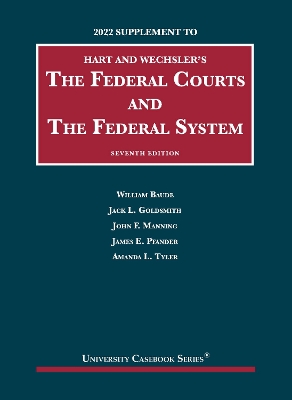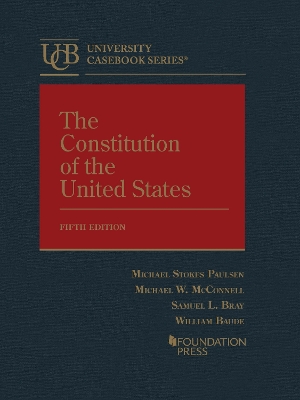University Casebook
6 total works
The Federal Courts and the Federal System, 2021 Supplement
by Richard H Fallon, Jr., Jack L. Goldsmith, John F. Manning, David L. Shapiro, and Amanda L. Tyler
Published 30 August 2021
This supplement brings the principal text current with recent developments in the law.
This updated casebook is designed for a first-year class on Legislation & Regulation, and provides a proven, ready-to-use set of materials for those interested in introducing such a class to their 1L curriculum. The book focuses on the tools and methods of interpreting legal texts, using Supreme Court and other appellate decisions as the primary texts, yet the note material gently introduces students to applicable insights from political science, history, economics, and philosophy. The book aims to familiarize students with tools and techniques that lawyers and judges use when crafting legal arguments in statutory or regulatory contexts, and to give students a sense of the larger questions of institutional design implicated by these interpretive questions.
Hart and Wechsler's The Federal Courts and the Federal System, 2022 Supplement
by William Baude, Jack L. Goldsmith, John F. Manning, James E. Pfander, and Amanda L. Tyler
Published 30 August 2022
This supplement brings the principal text current with recent developments in the law.
The Constitution of the United States
by Michael Stokes Paulsen, Michael W McConnell, Samuel L. Bray, and William Baude
Published 9 December 2022
This casebook emphasizes the text, structure, and history of the Constitution. It uses "great cases" for learning the major issues in constitutional law, and it gives less attention to small ripples of contemporary doctrine. It emphasizes the task of interpretation, including many examples of the interpretation of the Constitution by the political branches. The fifth edition has new cases on free speech (e.g. NIFLA), free exercise (Carson), the Second Amendment (Bruen), substantive due process (Dobbs), and Article V (Dillon), as well as new executive materials on the Equal Rights Amendment. There are also new assignments on free speech in schools and universities and on freedom of the press and the internet. Like the previous editions, this edition gives attention to features of our constitutional history that are neglected in many casebooks, such as slavery, the amendment process, and the early history of the freedom of speech.
The Federal Courts and the Federal System, 2023 Supplement
by William Baude, Jack L. Goldsmith, John F. Manning, James E. Pfander, and Amanda L. Tyler
Published 31 August 2023
This supplement brings the principal text current with recent developments in the law.
Ames, Chafee, and Re on Remedies, Cases and Materials
by Samuel L. Bray and Emily Sherwin
Published 5 June 2024
This casebook explores the law of remedies, and several features distinguish it from other leading casebooks. This book treats equity as a vital part of modern law, and its coverage of restitution is extensive and clearly organized. The book also employs the pedagogically useful technique of illustrating many remedial principles in both a tort context and a contract context. In this edition, there are new "Analysis" notes guiding students through the main points of most of the cases. Many other notes are refined and some cases are updated, and the chapters on punitive damages and the declaratory judgment are systematically revised. The book is named for three of the previous editors: James Barr Ames, Zechariah Chafee, Jr., and Edward D. Re.


